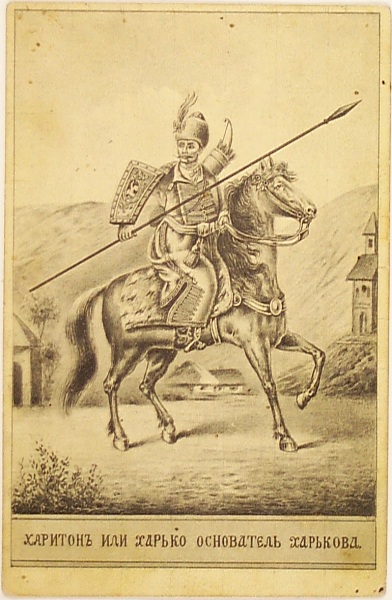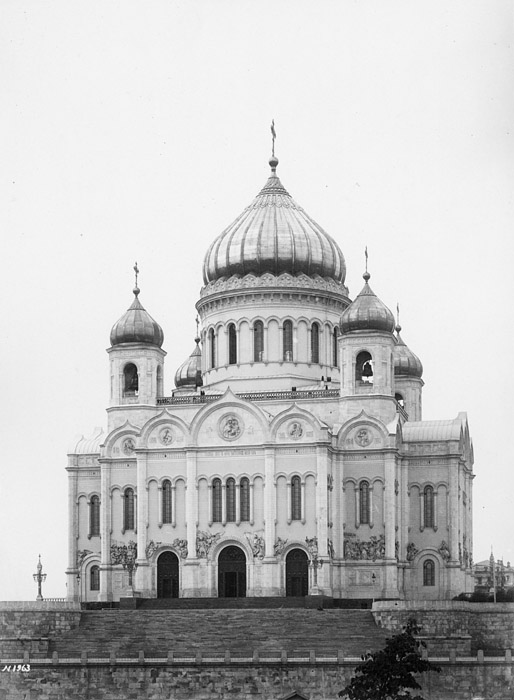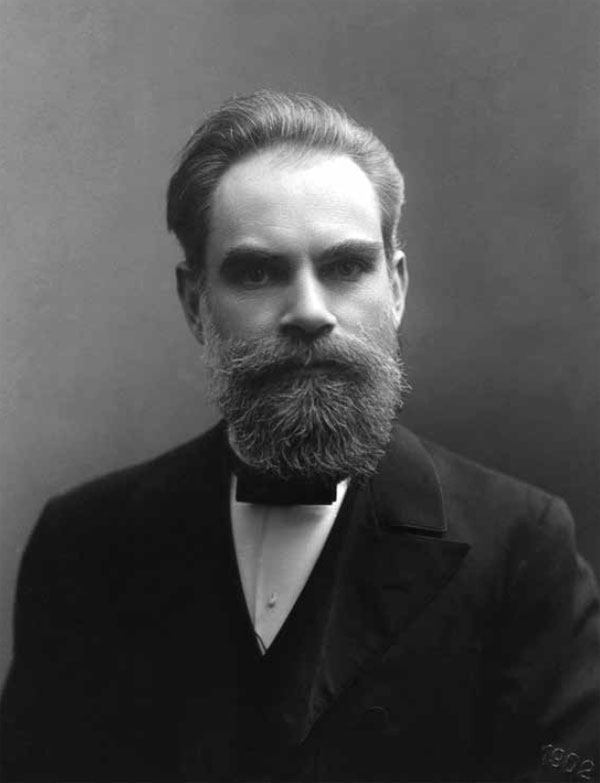|
Imperial Kharkov University
Imperial Kharkov University (1803–1917) was one of the twelve Imperial Universities of the Russian Empire, now known as National University of Kharkiv in Ukraine. History Foundational years and architectural legacy The Imperial University of Kharkov was established by a decree signed on January 24, 1803, and officially opened on January 17, 1805, when, as part of the creation of educational districts, Emperor Alexander I approved its charter. It was the only university in the southern Russian Empire and significantly impacted Kharkov, a provincial town. It was also one of the oldest classical universities in Eastern Europe, located in the lands of Sloboda Ukraine within the Russian Empire and modern Ukraine. The main building of the university was the governor's palace, constructed from 1768 to 1777 based on a design by architect Mikhail Tikhmenev, similar to an earlier one in Veliky Novgorod. This Novgorod palace was a road palace for Empress Catherine II, designed to ... [...More Info...] [...Related Items...] OR: [Wikipedia] [Google] [Baidu] |
Imperial University (other)
Imperial University may refer to: Asia * Guozijian of the Chinese Empire (c. 221 BC–1912) * Taixue of the Chinese Empire (c. 221 BC–1912) * Imperial University of Peking (1898–1912), now Peking University Peking University (PKU) is a Public university, public Types of universities and colleges in China#By designated academic emphasis, university in Haidian, Beijing, China. It is affiliated with and funded by the Ministry of Education of the Peop ..., Beijing, China * Imperial Universities of the Japanese Empire (1868–1947) ** University of Tokyo, formerly known as "Imperial University" Europe * Imperial University, known as University of France (1808–1896), initiated by Napoleon, Paris, France * Imperial College London, London, United Kingdom * Imperial Universities of the Russian Empire (1721–1917): *# Imperial Moscow University (1755-1917), now Moscow State University, Moscow, Russia *# Imperial Dorpat University (1802-1917), now University of Tartu, Tart ... [...More Info...] [...Related Items...] OR: [Wikipedia] [Google] [Baidu] |
Kharkov
Kharkiv, also known as Kharkov, is the second-largest List of cities in Ukraine, city in Ukraine.Kharkiv "never had eastern-western conflicts" , ''Euronews'' (23 October 2014) Located in the northeast of the country, it is the largest city of the historic region of Sloboda Ukraine. Kharkiv is the administrative centre of Kharkiv Oblast and Kharkiv Raion. Prior to the Russian invasion of Ukraine in early 2022, it had an estimated population of 1,421,125. Founded in 1654 as a Cossacks, Cossack fortress, by late 19th century Kharkiv had developed within the Russian Empire as a major commercial and industrial centre. From December 1919 to January 1934, Kharkiv was the capital of the Ukrainian Soviet Socialist Rep ... [...More Info...] [...Related Items...] OR: [Wikipedia] [Google] [Baidu] |
Russian Empire
The Russian Empire was an empire that spanned most of northern Eurasia from its establishment in November 1721 until the proclamation of the Russian Republic in September 1917. At its height in the late 19th century, it covered about , roughly one-sixth of the world's landmass, making it the list of largest empires, third-largest empire in history, behind only the British Empire, British and Mongol Empire, Mongol empires. It also Russian colonization of North America, colonized Alaska between 1799 and 1867. The empire's 1897 census, the only one it conducted, found a population of 125.6 million with considerable ethnic, linguistic, religious, and socioeconomic diversity. From the 10th to 17th centuries, the Russians had been ruled by a noble class known as the boyars, above whom was the tsar, an absolute monarch. The groundwork of the Russian Empire was laid by Ivan III (), who greatly expanded his domain, established a centralized Russian national state, and secured inde ... [...More Info...] [...Related Items...] OR: [Wikipedia] [Google] [Baidu] |
Alexander I Of Russia
Alexander I (, ; – ), nicknamed "the Blessed", was Emperor of Russia from 1801, the first king of Congress Poland from 1815, and the grand duke of Finland from 1809 to his death in 1825. He ruled Russian Empire, Russia during the chaotic period of the Napoleonic Wars. The eldest son of Emperor Paul I and Sophie Dorothea of Württemberg, Alexander succeeded to the throne after his father was murdered. As prince and during the early years of his reign, he often used liberal rhetoric but continued Russian absolutism, Russia's absolutist policies in practice. In the first years of his reign, he initiated some minor social reforms and (in 1803–04) major liberal educational reforms, such as building more universities. Alexander appointed Mikhail Speransky, the son of a village priest, as one of his closest advisors. The over-centralized Collegium (ministry), Collegium ministries were abolished and replaced by the Committee of Ministers of the Russian Empire, Committee of Ministers ... [...More Info...] [...Related Items...] OR: [Wikipedia] [Google] [Baidu] |
Kharkiv
Kharkiv, also known as Kharkov, is the second-largest List of cities in Ukraine, city in Ukraine.Kharkiv "never had eastern-western conflicts" , ''Euronews'' (23 October 2014) Located in the northeast of the country, it is the largest city of the historic region of Sloboda Ukraine. Kharkiv is the administrative centre of Kharkiv Oblast and Kharkiv Raion. Prior to the Russian invasion of Ukraine in early 2022, it had an estimated population of 1,421,125. Founded in 1654 as a Cossacks, Cossack fortress, by late 19th century Kharkiv had developed within the Russian Empire as a major commercial and industrial centre. From December 1919 to January 1934, Kharkiv was the capital of the Ukrainian Soviet Socialist Rep ... [...More Info...] [...Related Items...] OR: [Wikipedia] [Google] [Baidu] |
Sloboda Ukraine
Sloboda Ukraine, also known locally as ''Slobozhanshchyna'' or ''Slobozhanshchina'', is a historical region in northeastern Ukraine and southwestern Russia. It developed from Belgorod Razriad and flourished in the 17th and 18th centuries on the southwestern frontier of the Tsardom of Russia. In 1765, it was converted into the Kharkov Governorate, Sloboda Ukraine Governorate. Etymology Its name derives from the term ''sloboda (settlement), sloboda'' for a colonial settlement free of tax obligations, and the word ''Name of Ukraine, Ukraine'' was used to refer to the area inhabited by Ukrainian Cossacks and settlers. The word ''Ukraine'' is often considered to originally refer to a 'borderland', a view supported by Russian, Ukrainian, and Western historians such as Orest Subtelny, Paul Magocsi, Omeljan Pritsak, Mykhailo Hrushevskyi, Ivan Ohiyenko, Petro Tolochko,Толочко П. П. «От Руси к Украине» («Від Русі до України») 1997 and others. It i ... [...More Info...] [...Related Items...] OR: [Wikipedia] [Google] [Baidu] |
Veliky Novgorod
Veliky Novgorod ( ; , ; ), also known simply as Novgorod (), is the largest city and administrative centre of Novgorod Oblast, Russia. It is one of the oldest cities in Russia, being first mentioned in the 9th century. The city lies along the Volkhov River just downstream from its outflow from Lake Ilmen and is situated on the M10 federal highway connecting Moscow and Saint Petersburg. UNESCO recognized Novgorod as a World Heritage Site in 1992. The city has a population of At its peak during the 14th century, the city was the capital of the Novgorod Republic and was one of Europe's largest cities. The "Великий" part was added to the city's name in 1999. Climate Veliky Novgorod has a humid continental climate (Köppen ''Dfb''). The city has warm summers with temperatures reaching over 30 °C (86 °F) and relatively cold winters with frequent snowfall. The lowest air temperature ever recorded is -45 °C (-49 °F). The warmest month is July with a d ... [...More Info...] [...Related Items...] OR: [Wikipedia] [Google] [Baidu] |
Catherine The Great
Catherine II. (born Princess Sophie of Anhalt-Zerbst; 2 May 172917 November 1796), most commonly known as Catherine the Great, was the reigning empress of Russia from 1762 to 1796. She came to power after overthrowing her husband, Peter III. Under her long reign, inspired by the ideas of the Enlightenment, Russia experienced a renaissance of culture and sciences, which led to the founding of many new cities, universities, and theatres, along with large-scale immigration from the rest of Europe and the recognition of Russia as one of the great powers of Europe. In her accession to power and her rule of the empire, Catherine often relied on her noble favourites, most notably Count Grigory Orlov and Grigory Potemkin. Assisted by highly successful generals such as Alexander Suvorov and Pyotr Rumyantsev, and admirals such as Samuel Greig and Fyodor Ushakov, she governed at a time when the Russian Empire was expanding rapidly by conquest and diplomacy. In the south, the ... [...More Info...] [...Related Items...] OR: [Wikipedia] [Google] [Baidu] |
Konstantin Thon
Konstantin Andreyevich Thon or Ton (; October 26, 1794 – January 25, 1881) was a Russian architect who was one of the most notable architects during the reign Nicholas I. His major works include the Cathedral of Christ the Saviour, the Grand Kremlin Palace and the Kremlin Armoury in Moscow. Early life Konstantin, born in St. Petersburg to the family of a German jeweller, was one of three Thon brothers who all rose to become notable architects. He studied at the Imperial Academy of Arts (1803–15) under the Empire Style architect Andrey Voronikhin, best remembered for his work on the Kazan Cathedral, situated right in the middle of the Nevsky Prospekt. He studied Italian art in Rome from 1819 to 1828, and on his return home was admitted to the academy as its member (1830) and professor (1833). In 1854, he was appointed rector of the architectural division of the academy. Thon first attracted public attention with his sumptuous design for the interiors of the Academy ... [...More Info...] [...Related Items...] OR: [Wikipedia] [Google] [Baidu] |
Aleksandr Lyapunov
Aleksandr Mikhailovich Lyapunov (Алекса́ндр Миха́йлович Ляпуно́в, – 3 November 1918) was a Russian mathematician, mechanician and physicist. He was the son of the astronomer Mikhail Lyapunov and the brother of the pianist and composer Sergei Lyapunov. Lyapunov is known for his development of the stability theory of a dynamical system, as well as for his many contributions to mathematical physics and probability theory. Biography Early life Lyapunov was born in Yaroslavl, Russian Empire. His father Mikhail Vasilyevich Lyapunov (1820–1868) was an astronomer employed by the Demidov Lyceum. His brother, Sergei Lyapunov, was a gifted composer and pianist. In 1863, M. V. Lyapunov retired from his scientific career and relocated his family to his wife's estate at Bolobonov, in the Simbirsk province (now Ulyanovsk Oblast). After the death of his father in 1868, Aleksandr Lyapunov was educated by his uncle R. M. Sechenov, brother of the physio ... [...More Info...] [...Related Items...] OR: [Wikipedia] [Google] [Baidu] |
Kharkiv National Medical University
The Kharkiv National Medical University (), formerly known as Kharkiv Medical Institute and previously Kharkiv State Medical University, is a State-sponsored medical university in Kharkiv, Ukraine. In March 2022 many buildings were heavily damaged due to the Russian invasion into Ukraine. Over 700 teachers work at the departments of the university. Staff capacity is 5 corresponding members NAMN Ukraine, 17 Honoured Scientist of Ukraine, 2 Honored high school Ukraine, 13 distinguished doctors of Ukraine, 8 winners of the State Prize of Ukraine in Science and Engineering, 28 academicians of the public academies of Ukraine, 28 employees - Member of International Medical Associations;. Since 1951, the university has been training medical personnel for countries of the Eastern Europe, China and Mongolia, and since 1961 it has been training students from other countries of Asia, Africa and Latin America. At present, there are about 3400 foreign students in the Kharkiv National Medic ... [...More Info...] [...Related Items...] OR: [Wikipedia] [Google] [Baidu] |






